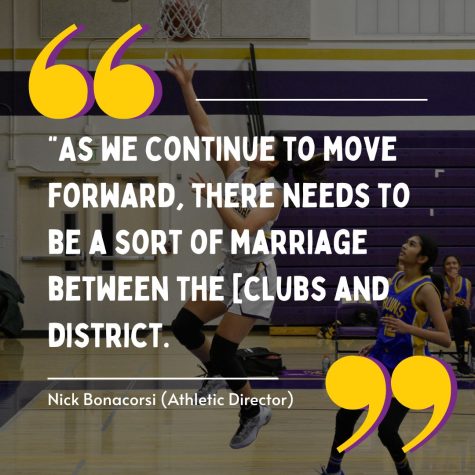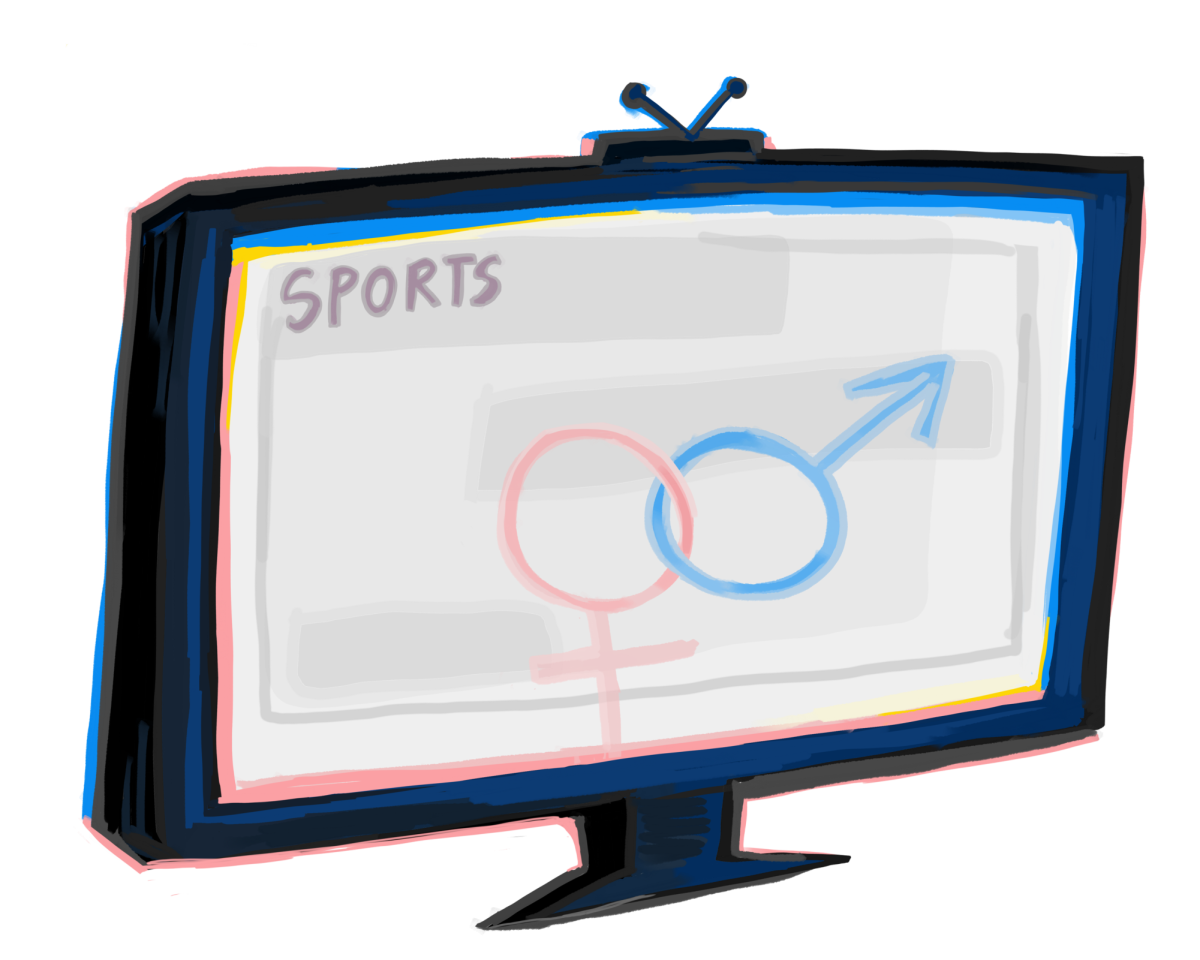Same sport, different situations
Exploring the similarities and differences between school and club coaches
Varsity Girls Basketball Head Coach Sara Borelli coaches the team after the end of the first quarter in the game against Saratoga High School on Thursday Jan. 26.
February 10, 2023
Girls Varsity Basketball Head Coach Sara Borelli started her basketball coaching career at South San Francisco High School, five years before she started working at MVHS. The coach of SSFHS’s basketball team at that time, originally a football coach, needed some assistance. Therefore, Borelli was recruited as a coach for SSFHS due to her experience playing collegiate basketball.
While Borelli enjoys being a coach, she says coaches at FUHSD are not compensated enough for their work “like other districts are,” as their pay is just over $4,000 per season. According to Athletic Director Nick Bonacorsi, the pay for many “is going to be barely a month’s rent” after tax.
Bonacorsi explains that the low coaching stipend compared to the high expense rates in this area is a primary reason why the search for coaches for spring season sports was extremely difficult. Furthermore, high school coaches tend to have many responsibilities beyond teaching the players about the sport.
“I think [club and school sports] are different in a lot of ways,” Bonacorsi said. “Here [in high school] we’re working on character development stuff more, [and coaches] have to deal with the academic side as well.”
Varsity Boys Volleyball Head Coach Paul Chiu agrees with Bonacorsi about the additional duties for a high school coach, in contrast to a club coach. Prior to his current position as MVHS’s Volleyball head coach, Chiu coached club volleyball at Bay to Bay Volleyball Club and Aloha Beach Volleyball Club, and admits that “it’s easier to coach club [sports] than it is to coach high school.”
 “[In] club, the priorities are different,” Chiu said. “Most club coaches tend to care less about your high school commitments and those other issues that come up that you have to balance as a high school coach, so they prioritize the club, and the schedule is just scheduled. They don’t provide the flexibility to the players that a high school coach has to give.”
“[In] club, the priorities are different,” Chiu said. “Most club coaches tend to care less about your high school commitments and those other issues that come up that you have to balance as a high school coach, so they prioritize the club, and the schedule is just scheduled. They don’t provide the flexibility to the players that a high school coach has to give.”
Borelli further echoes Bonacorsi and Chiu, explaining that her role as the Girls Varsity Basketball coach encompasses not only coaching her players during games and practices, but also managing the Junior Varsity program, handling fundraising and ordering gear. Additionally, Borelli has to manage the responsibilities and work of an English teacher at MVHS.
“Especially teaching English where I have a lot of work to do, I have a lot of grading, essays to grade, [it’s] a lot of time in that regard too,” Borelli said. “Everyone assumes I’m a P.E. teacher when I tell them I teach [at MVHS], so it’s difficult.”
In addition to the coaching Borelli now does for the MVHS Girls Varsity Basketball Team, she has also had experience coaching a club basketball team. When recounting her experience, Borelli finds that coaching for a club sport was more relaxed and less of a commitment for both the players and coach.
“We didn’t have practice every day and we only played on the weekends,” Borelli said. “It was more of a learning opportunity. It wasn’t about winning or losing. It’s more like, ‘Let’s just go and play and have fun and if we win, great, if we don’t, we fix things and start again.’”
Bonacorsi further explains the differences between club and school coaching by illustrating the different aspects between school and club teams.
“We have more rules, we have more requirements, there’s more to being a high school coach, whereas the club usually has a structure in place that allows you to just show up, coach, and then leave or coach your practices back to back or whatever it might be,” Bonacorsi said. “And we’re also not charging a large amount [from] our athletes to participate in athletics.”
These differences result in the difficulty for Bonacorsi to find people who are experienced with coaching and also willing to accept a heavy responsibility for a light compensation. However, while many sports clubs such as basketball and volleyball close down during the high school season, many clubs still continue throughout the high school sports seasons.

While many club coaches are still willing to take up the role as a high school coach during their club seasons, Bonacorsi explains the coaches request to rent facilities for their clubs from the district is often denied by the district, making it “economically challenging” for these coaches. This results in an unhealthy relationship where neither side receives any benefits.
Currently, the districts have started to shift their philosophy to help the clubs more, and Bonacorsi hopes to continue this relationship between the clubs and the district. A symbiotic relationship between the district and club coaches, according to Bonacorsi, will allow the sports department to thrive and continue to provide high school athletes with the opportunities to compete and play in sports teams.
“As we continue to move forward, there needs to be a sort of marriage between the [clubs and district,” Bonacorsi said. “I think that the future is having a coach who coaches your Varsity high school team, who probably also has club background on the side, and that can all be happening in this healthy relationship together.”





























